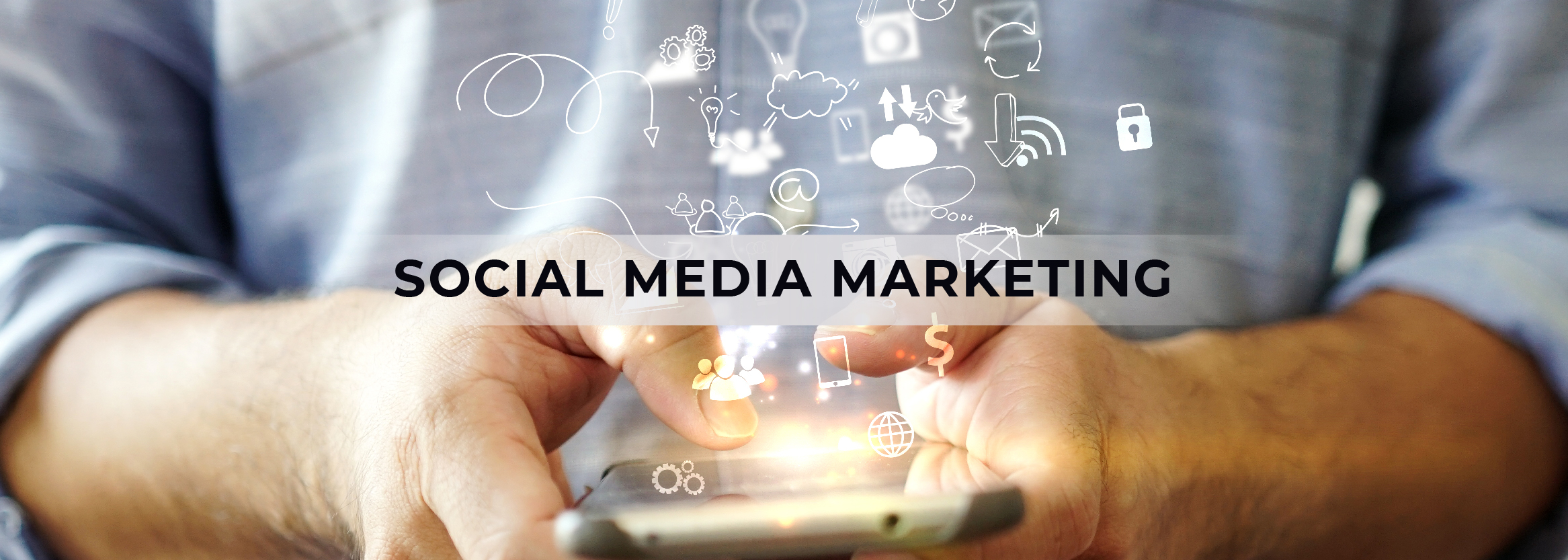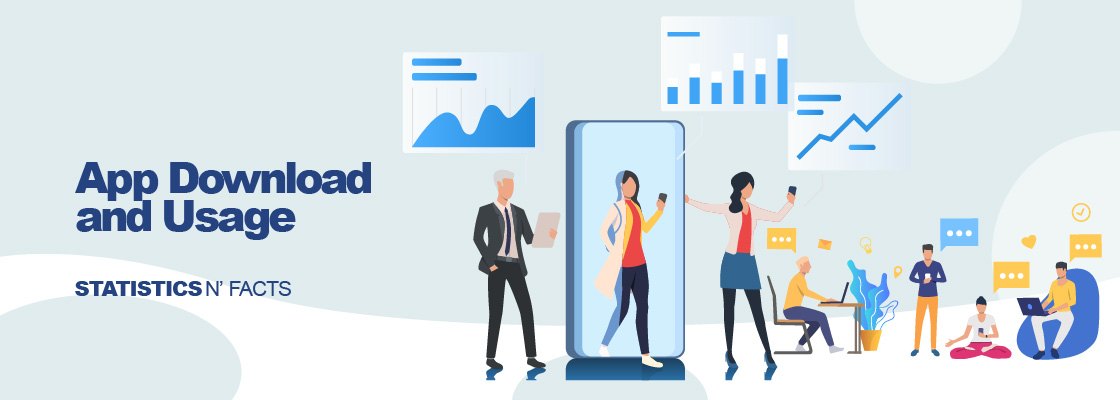Social Media Marketing Statistics: Social media marketing uses social media platforms to connect with an audience to build a brand, increase sales, and drive website traffic. This involves publishing great content on social media profiles, listening to and engaging followers, analyzing the results, and running social media advertisements.
The major social media platforms (presently) are Facebook, Instagram, Twitter, LinkedIn, Pinterest, YouTube, and Snapchat. A range of social media management tools also helps businesses get the most out of the social media platforms mentioned above.
History of Social Media Marketing
Although social media seems like a new trend today, its roots go back to the advent of the computer age. The result of decades-old social media developments is what we see today. Usenets was founded in 1979 and was the original progenitor of social media. The journey from the Usernets to Facebook was long. Users could post to newsgroups using Usenets. This was followed by bulletin board systems (BBS), which allowed users to log in and interact. BBS was preceded by online services. Internet relay chat was the next step in instant messaging, which came to be known after the introduction of online services.
Dating sites and forums reached their peak in the 1990s. This led to the creation of social networks. They did not allow users to create friend lists. Six degrees were created to address this issue. It was able to create profiles and list pears. After a decade of use, it was bought and closed down. This was the era of blogging, which created a buzz on social media. It is still very popular today. BlackPlanet (African American Social Website) was another site that offered the ability to create profiles and add friends.
Modern Social Networks
Modern social networks came into the picture post-2000. Apple’s Friendster was launched in 2002. Hi5 and Linkedin were launched in 2003. Linkedin allows professionals to connect with one another. MySpace was also founded in 2003 and became very popular by 2006. Facebook, also launched in 2003, is still growing and surpassing other social media platforms like MySpace, Orkut, and Multiply. In this decade, media sharing platforms such as Photobucket and Flickr, Youtube, and Instagram were created, along with news and bookmarking services like Delicious and Digg.
Social Media has grown exponentially since 2000 and continues to expand. Facebook’s advertising system was launched in 2007. Many other platforms that offer real-time updates, such as Twitter, Tumblr, and others, were also introduced to media sharing.
Importance of Social Media
Social media’s importance is undisputed. Social media is an effective channel for marketing that can make a significant difference in any company’s success. It allows users to communicate on both a personal and business level.
Search media can help business owners improve their search rankings, sales, traffic, and leads. This can be done with lower marketing costs. It is not only a great way to stay connected with loved ones and friends, but it also serves as a platform for businesses.
SMO Strategy for Business
Social Media Optimization (SMO), if done well, can be an immense boost for businesses. It is important to have clear business goals and objectives to reap the maximum benefits of Social Media. These are the core of any well-planned SMO strategy.
- Establish measurable, achievable goals.
- Target customers.
- Market trends and research.
- Discover more social networking sites.
- Select core topics that are relevant to the business.
- Set social engagement parameters.
- Plan the use of resources.
- Keep track of results.
SMO Key Concepts
- Build trust by presenting yourself as a trustworthy source or business.
- Encourage sharing and engagement.
- Be an authority in the field.
- Be original.
- Keep it fun.
- Master media platforms.
- Every single thing that can hinder efforts should be optimized.
Business Profile Creation
- Make an impactful business profile. Create a persona and proficiency description for the business.
- Analyze the strengths of competitors and study their business profiles.
- Highlight a business’s distinctive features to make it stand out.
- Incorporate milestones that a company will achieve.
- Add a business address and other details.
- Include statistics and data.
- Register the most renowned vendors.
- To make it more searchable by web crawlers, add keywords.
Brand Awareness
Brand awareness refers to the degree that a brand is well-known. Customers trust brands. The brand name must outweigh the products. Promoting the brand name can help to grow the business and overcome an obsolete business state.
- Select the right social media channel for your company
- Finalize a social content strategy.
- Create a strong content strategy.
- To make customers feel more connected, engage in good conversations with them.
- All key metrics should be tracked, such as potential reach, conversation shares, and links.
Social Engagement
Social Media Engagement refers to reaching out and interfacing with potential customers through Social Media. This is done primarily to draw attention to a product or service. It’s a two-way channel that allows consumers to build a relationship with vendors.
- Social channels are used to reach fans.
- Any event can be announced via social media platforms.
- The audience posts entertaining content.
- Use social media to create circles and have valuable as well as educational discussions.
- Participate in social media groups
Viral Marketing
Viral marketing is any viral topic. It’s exposing an idea for a cause. It’s a message that goes viral and is passed from one person to another in the hopes of helping a business.
Social media viral marketing is using social media channels to spread messages and create brand awareness. Each level of viral marketing may have a different rate.
Charts:
Benefits of Social Media Marketing Worldwide 2021
Global industry professionals cite increased exposure as the main benefit of social media marketing. Given the immense appeal of millions of users being able to advertise, this is not surprising. Marketers see social networks as a valuable tool to increase traffic and lead generation and to improve fan loyalty. Global marketers use Facebook, Instagram, and LinkedIn as the most popular social networks.
Leading Media Owners Worldwide in 2021, By Ad Revenue
Google was the world’s largest media company in 2021 with advertising revenues of US$192 billion. Bytedance, the parent company of TikTok, earned US$38.6 billion in advertising revenues. This placed it third in the global rankings. Bytedance beat Amazon and Tencent, among other major players in the media sector.
Leading Social Media Usage Reasons Worldwide 2021
A survey conducted in Q3 of 2021 found that almost half of all respondents stated they used social media to stay in touch with friends and family. Filling spare time and reading news stories also appeared to be among the main reasons for using social media, while just over 21% of respondents reported using social media platforms to follow celebrities or influencers. Additionally, 17.4% of internet users said that they used social media to support and connect with good causes.
Most Popular Digital Marketing Channels Worldwide 2020
During an early 2020 survey carried out among marketing leaders from 29 countries, 83% of respondents reported using social media as a digital channel for their marketing strategy. To compare, 67% of professionals said they used search marketing, and 66% of videos or OTT.
Social Media Ad Spend Growth Worldwide 2020-2021
Social media advertising worldwide spent more in all quarters than it did in the second half of 2020, and even the third quarter of 2020. It was 63% higher than the base quarter in Q4, 2020.
Social Media Ad Spending Worldwide 2017-2026, By Device
The global market for social media advertising was worth US$181.2 billion in 2021. Mobile accounted for about US$146 billion, while desktop accounted for US$35 billion. The market’s total value is expected to index US$358 billion by 2026.
Organic vs. Paid Social Media Used by B2C Marketers Worldwide 2021
A November 2021 survey of business-to-consumer marketers revealed that Instagram was used by 80% of respondents for organic content distribution and 47% for paid content distribution.
Benefits of Social Media Marketing
- Make your business human: Social media allows a company to become an active participant in a given target market. Profile, posts, and interactions with users create an approachable persona that the target audience can connect with and trust.
- Drive traffic: With a link in a given profile and blog links on posts as well as ads, social media can be a great channel to increase traffic to a site, where it can be leveraged to convert visitors into customers.
- Secure leads and customers: These platforms also have features such as Instagram/Facebook shops and direct messaging. It can also book appointments and make calls via the Call-to-Action (CTA) buttons.
- Increase brand recognition: Social media’s visual nature allows the creation of a tangible identity and increases brand awareness. Better brand awareness leads to better results in all other campaigns.
- Create relationships: These platforms allow for both direct and indirect communications with followers. Through these channels or networks, get critical feedback and have discussions with people.
Statistics on Social Media Marketing
- An average American adult spends 2.25 hours per day on social media.
- More than 70% of those who share positive experiences with businesses on social media will recommend them to others.
- Each month, Facebook users click 12 ads.
- 81% of Instagram users use it to search for products and services.
- Nearly 80% feel more positive about a company when they receive a reply to their tweet.
- LinkedIn is used by 4/5 people to drive business decisions.
- 46% of TikTok app users use the app with no distractions.
The Essentials of a Successful Social Media Marketing Strategy
While every company will have a different social media strategy, here are some common traits:
- Knowledge about audience: Which platforms they use, when and why they do so, what content they enjoy, and who they follow.
- Brand identity: What message do you want to send to your audience? What do you want your audience to feel about certain content?
- Content strategy: Although there’s a lot of spontaneity on social media, it needs a well-structured content strategy.
- Analytics: Quantifiable insight will help to plan a strategy. This includes who is reaching out to you, what content to share when to post, and other related information.
- Regular activity: The real-time platform of social media is Facebook. Users must post frequently, keep track of business engagements, engage back, be up-to-date with trends and maintain accurate profiles if they want to grow their businesses.
- Inbound approach: Do not use social media to pitch to businesses. Which should be adding value by creating useful and engaging content and empowering others. This will naturally promote a business, and in turn, other users will also promote the same.
Social Media Marketing for Businesses:
Facebook, Instagram, LinkedIn, and Twitter are the best social media platforms for businesses. Different social media marketing platforms require different approaches. Here’s a quick overview of each site’s user base, main vibes, and pros as well as cons.
Facebook is both the world’s largest social media platform and one of the most popular local business directories. It is used by a wide range of people from diverse age demographics to communicate with their friends and family, join groups and forums, find local businesses, and follow brands.
- Establish relationships with customers
- Announce Hours: Changes, Events, and Milestones
- Live streams and discussions
- Baby boomers are the market
LinkedIn is a professional network. However, it’s also an inspiring community that celebrates leadership, learning, and core values. LinkedIn is a great tool for networking, finding prospects, and sharing industry insights. It’s also a great place to express company culture and build a personal brand alongside business branding. There are many LinkedIn features that can take advantage of when creating a company page.
- Attract top talent
- Network with peers, customers, and partners
- Celebrate company milestones and share culture
- Industry news and insights
Twitter is an intricate network of fast-paced thoughts, useful tidbits, and energized conversations. It is important to be active on all social media platforms, especially Twitter. Twitter is a popular platform for people to find news, follow brands, and receive customer service. When a customer comments on anything, be sure to retweet it. Additionally, don’t forget to answer people’s questions whenever possible.
- Follow influential people to stay on top of the latest trends and news.
- Share a story by sharing a series of tweets in one thread.
- Be available to answer questions and provide customer service.
Snapchat
Snapchat is not just for teens. Snapchat’s largest age group (75%) is between 13 and 34. Snap Maps, geo-filters, and its partnership with Gannett Co. Inc. make it more local-focused than one might think. It cannot help create relationships through the platform, but it can build an audience with fun images and short videos.
- Marketing based on location
- App Marketing
- Feel-good content
TikTok
TikTok has been the fastest-growing social media platform ever, with only five years required to reach one million monthly active users. Although it is best known for its user’s dancing, the platform has many other popular categories that continue to grow. It is also being leveraged by businesses as a reliable marketing channel.
- Upload funny or inspiring videos
- Be relatable
- Take part in the most current challenges








